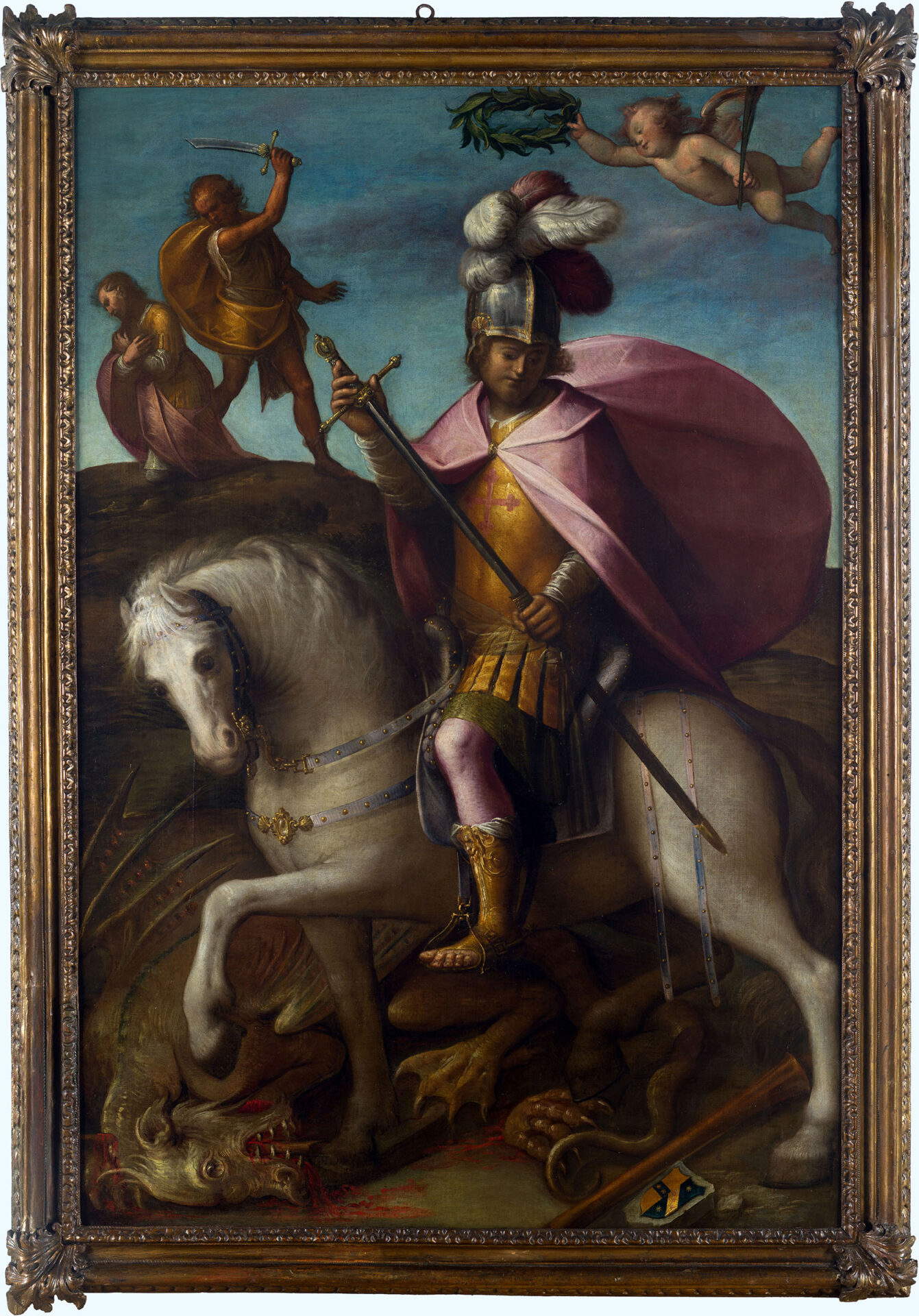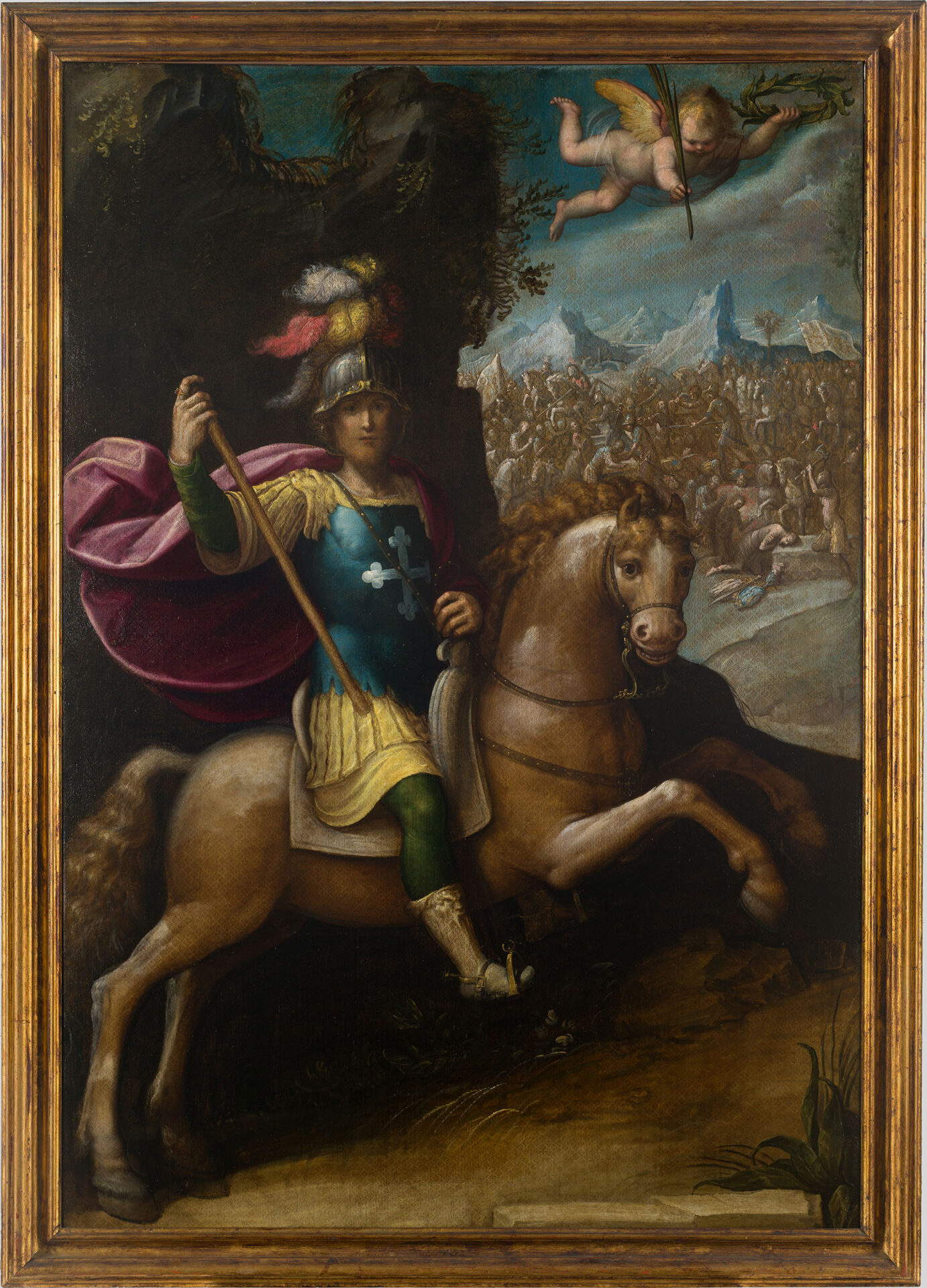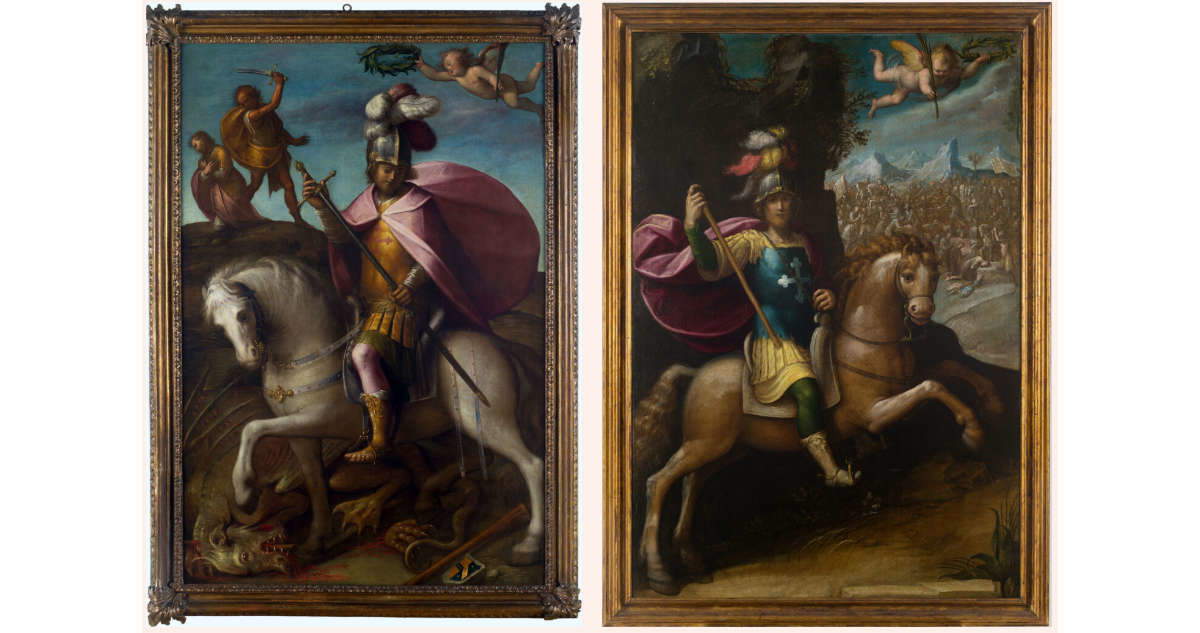From Thursday, September 11, 2025, visitors to the Royal Museums of Turin will find an exhibition itinerary enriched by two new and valuable acquisitions. In the Galleria Sabauda, on the second floor, in a space located in front of the bookshop, two canvases of great historical and artistic importance will in fact be on view: the Saint George on Horseback and Saint Maurice on Horseback, works by Guglielmo Caccia known as Moncalvo (Montabone, 1568 - Moncalvo, 1625), created around 1620.
The arrival of these works coincides with the celebration of the 400th anniversary of the death of the painter, who was born in Montabone d’Asti in 1568 and died in Moncalvo in 1625. Caccia is considered one of the main interpreters of late Mannerist culture between Piedmont and Lombardy and one of the most representative figures of Counter-Reformation painting. Their acquisition by the General Directorate of Museums of the Ministry of Culture for the benefit of the Royal Museums is a major enrichment for the national heritage.
The two canvases had already been recognized as being of “particularly important artistic and historical interest,” so much so that they were withheld from export. They now officially enter the collections of the Royal Museums thanks to a private negotiation and, after careful restoration by the Centro Conservazione Restauro “La Venaria Reale” (CCR), they are returned to the public in their original brightness. Alongside the paintings, visitors will also find a film documenting the stages of the conservation intervention, offering a valuable glimpse into the work of the restorers.
The two works have a significant history. They originally belonged to the Capuchin church in Chieri, named after St. Maurice, which was demolished in the early 19th century during the Napoleonic suppressions. An eighteenth-century manuscript describes the furnishings of the building and records how on either side of the high altar were placed “two ancient pictures of excellent brushwork, of St. Maurice, and of St. George, dressed in the military style with cross on their chests mounted on beautiful horses.” The description corresponds faithfully to the two canvases now on display in Turin, which depict the saints on horseback with the symbolic force typical of Counter-Reformation commissions.


A bipartite coat of arms appears in the canvas dedicated to Saint George, patron saint of Chieri, alluding to the union between two noble families: the Quarini of Chieri and the Ranotto of Turin. It is a detail that refers directly to the commissioning of the work, an expression of these families’ strong ties to the Savoy court. The commission to Moncalvo is not surprising: in fact, the artist was active in Turin at the behest of Duke Charles Emmanuel I of Savoy, who called him to participate in the decoration of the Great Gallery, the corridor that joined the Ducal Palace to the Castle, today Palazzo Madama. That worksite, now lost, also included equestrian portraits of the duke and his ancestors, with which the paintings of St. George and St. Maurice show interesting compositional and stylistic affinities.
The entry of the two paintings into the public collections substantially enriches the corpus of works by Moncalvo already held by the Galleria Sabauda, where an entire room is dedicated to him. It should not be forgotten that the Royal Museums, and in particular the Royal Library, also hold autograph drawings of considerable value. With this acquisition, the artist’s presence in the Turin collections is consolidated and expanded, offering a more complete picture of his production.
The restoration conducted by CCR “La Venaria Reale” played a key role in restoring the two canvases. In the case of the St. Maurice, investigations revealed that the work was originally larger in size: traces of the saint’s name and a no longer legible noble coat of arms were identified on the lower edge. The intervention made it possible to restore the continuity of the pictorial surface, recovering in particular the texture of the typical “diamond” or “diamond” weave, a distinctive technical choice of Moncalvo to give depth and materiality to his works.
The removal of yellowed paint and repainting layered over time has made details of great interest legible again, particularly the scene in the background depicting the battle of the Theban Legion. The precision of the brushstroke and chromatic richness are now fully perceptible, restoring to the public the original complexity of the composition.
The Saint George, on the other hand, presented different problems, related to previous restorations that had altered the chromatics and compromised the overall harmony. In this case, too, the intervention was thorough: incongruous repainting was removed, work was done on the textile support, and previously concealed iconographic details were recovered, such as the horse’s left ear, now visible again. The new color reading brought out the finesse of Moncalvo’s technique, particularly his minute, parallel brushstrokes in the highlights, which give vitality and plasticity to the volumes.
The recovery of these two paintings is not only an enrichment for the Sabauda Gallery, but also represents an important gesture of giving back to the community. The canvases, originally intended for a religious and community context, now return to be shared heritage, accessible to a wide and diverse public.
With the exhibition of the two works, the Musei Reali consolidates its role as a cultural hub capable of telling the story and transformations of painting between Piedmont and Lombardy. Moncalvo, dubbed “Raphael of Monferrato” for his compositional grace and his ability to interpret with balance the instances of the Counter-Reformation, thus finds a new space of visibility.
 |
| The Royal Museums of Turin acquire two important paintings by Moncalvo |
Warning: the translation into English of the original Italian article was created using automatic tools. We undertake to review all articles, but we do not guarantee the total absence of inaccuracies in the translation due to the program. You can find the original by clicking on the ITA button. If you find any mistake,please contact us.